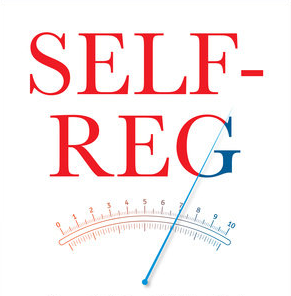
Stress
Self-Reg: The Nature of Stress
With self-reg, we can break the stress cycle—for our children and ourselves.
Posted June 20, 2016

Kids today are under way too much stress. Pretty much all kids, all ages. We know this because we’re seeing more and more children and youth with stress-related conditions: e.g., problems in health, allergies, behaviour, mood, attention, weight, resilience. Even more worrying is the large number of kids who are apathetic, oppositional, volatile, selfish and self-centred, easily frustrated and defeatist, negative and unhappy if not downright miserable. This isn’t just your typical “kids will be kids”: it’s a pervasive malaise that has parents everywhere anxious. Or perhaps I should say, even more anxious than has always been the common lot of parents.
Perhaps the most troubling aspect of this new phenomenon is that traditional methods of managing a child’s behaviour through punishment and reward not only have little effect, but actually make things worse: for both child and parent! The problem here is that all too often we get stuck in a self-control mindset when what we need to focus on first is self-regulation, which is what makes self-control possible, or, as is often the case, unnecessary.
This distinction between self-control and self-regulation is something that we’ll look at closely in the blogs ahead. The key here is that many of these problems that we’re seeing aren’t a form of misbehaviour: they are stress-behaviours. This distinction is also something that we’re going to be taking a close look at: the difference between misbehaviour and stress-behaviour, how we know which we’re dealing with, how we respond to each, and, in general, why kids today have so much stress in their lives. But for this first blog we need to start with that most basic of all questions: what exactly is stress?
In the popular mind, stress is that anxious feeling we get when we’re under too much pressure. Maybe this is true for children or teens who are struggling to succeed at school or simply in their social lives. Yet we’re seeing these problems in even the most “successful” kids; in fact, often especially in them. What’s more, these problems are showing up in even very young children. To get a sense of what’s going on and why, we have to go back to the original theory of stress.
The founders of this science, Walter Bradford Cannon and Hans Selye, defined “stress” as anything that disturbs the functioning of the systems that keep our body and mind running smoothly. These systems range from maintaining an average body temperature of 98.6 or regulating the amount of sodium and glucose in our bloodstream to managing our emotions or our interpersonal relationships.
Each of these systems operates within an “optimal range,” and a stressor is any stimulus that threatens their equilibrium. Energy expensive stabilizing reactions are automatically activated. Think, for example, of the effect of ambient temperature. When we’re cold we shiver and our teeth chatter in order to bring our body temperature back up to 98.6. We don’t decide to shiver: ancient systems deep in the brain are in charge of these emergency operations. They dictate, without any conscious deliberation on our part, where energy needs to be directed in order to keep us warm.
These same ancient brain systems are constantly scanning the environment—even when we’re sleeping and, for that matter, even inside the womb!—for signs of danger, and when they spot what they “think” is a threat they trigger responses designed to keep us safe. Heart-rate and breathing speed up, while our senses become attuned to potential threats. And when the “all-clear” signal is sounded and everything returns to normal, the body’s web of recovery and restorative systems are set in play.
The fact is, we need a certain amount of stress in our lives: what is known as positive stress. Without it we sink into lethargy and feelings of ennui. Positive stress is critical for growth and health: physical, mental, emotional, social, spiritual. Think of the effects of weight-training. What you’re doing is putting more stress on your muscles than they’re used to, and they respond by over-compensating in order to protect themselves against what they “expect” is going to be their new reality. But if you don’t build in the proper rest periods the positive stress turns into a negative, triggering a process where your muscles actually start to break down.
We’ll also be looking in the blogs ahead at this important distinction between positive and negative stress: i.e., between stressors that promote growth of one sort or another and those that impede it. Where things start to become a little more complicated is that there’s no hard and fast line between the two. Our reactions are highly individual, depending on our biology, and constantly shifting, depending on our internal state. So what’s a negative stressor for one person may be a positive for another, and what starts out as a positive stressor may turn into a negative.
Another important difference we’ll look at is between overt and hidden stress. The latter are stressors that we don’t recognize as such: experiences that burn a great deal of energy without our being aware of it—indeed, often while we’re asleep! It’s the abundance of hidden stressors that lies behind so many of the problems that we’re seeing in kids today: disrupting the systems that keep them vibrant, enable them to master new challenges and problems, get along with other kids, wake up each morning raring to go.
This is where Self-Reg comes in. Self-Reg is a powerful method for understanding stress and managing energy. Through Self-Reg we learn how to recognize stress-behaviours; identify the stressors that are the underlying cause; reduce those stressors; help kids become aware of what it feels like to be calm; and finally, help them acquire techniques for managing their energy: practices that are unique for each and every child and youth. But far from being an obstacle, it is this variability that makes Self-Reg such a personalized and rewarding learning experience.
I look forward to your comments and conversation here.



